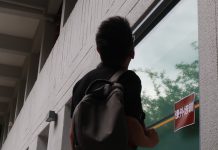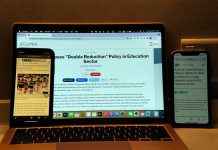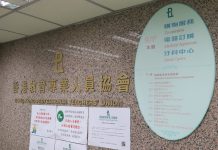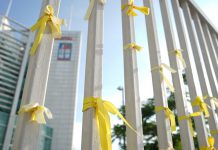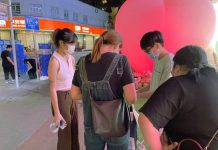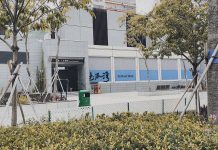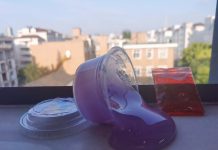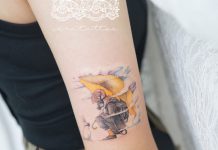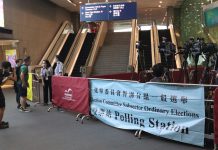Apart from publishing the district post, the Tuenmunity team also organises activities for residents through its Facebook page. Last November, it gathered over 400 people to cheer for the Hong Kong football team at a screening of the FIFA World Cup qualifier against China held near the Tuen Mun West Rail station.
Lai says she was surprised by how many people turned up for the event. It showed her that relying on distributing the 2,000 copies of the printed paper alone is rather limiting and the online community is more effective at reaching out to the younger generation.
Although Lai believes in operating both the online page and newspaper in order to reach different age groups, the high printing costs are a challenge for many community groups. Some have been forced to cease their printed editions.
Issac Wong King-yip founded Paper Shau Kei in 2012 with the aim of raising local residents’ awareness of the need to conserve the district’s culture and history. But publication of the freesheet was suspended in May 2014 because Wong could not support the HK$2,000 a month printing costs.
It is a move Wong undertook reluctantly and he still harbours hopes of resurrecting the paper. “It can take care of people who don’t go on the internet…and it shows residents you are serious,” Wong explains. “People will only regard printed things as media.”
After the suspension of the printed paper, Paper Shau Kei focuses on its Facebook page to retain its community influence. Wong acknowledges that the online platform is more effective when it comes to sharing information and gathering resources.
“When there are more than 10,000 likes [on a Facebook page], we can easily gather people for an event even without a paper version,” he concedes.
Compared with printed media, Wong says online pages help cultivate social cohesion because of their superior communication and interactive functions. “It’s too old-fashioned to ask people to send us letters giving us feedback…but you can now do everything on Facebook,” says Wong.
Wong knows that for people in a community to be truly connected, the jump needs to made from online connections to real-world ones.
Sai Wan Metamorphosing is one of the few Facebook groups to successfully transform an online community into a physical one. Tai Ngai-lung, the group’s founder says it is a platform for Sai Wan, or Western district residents. It now has more than 18,000 members.
Last year, the group managed to gather more than 1,000 people to watch the Hong Kong vs China World Cup qualifier at a live screening in Sands Street, Kennedy Town.
When he first set up the group, Tai had been worried it would become a plaform for socialising and chatting. However, after the success of a joint event organised by his group and other Sai Wan online communitites last year, those fears have been dispelled.The Lantern Festival street fair held in Sai Ying Pun last year was the first event to be organised by the online community and for Tai, it was a landmark.
“The first event marks Sai Wan Metamorphosing changing from an online community to the physical community,” says Tai.
Tai says he originally set up the group to unite residents so they could have a bigger voice in the face of upheavals such as the redevelopment of Western district. He says that back in 2010, the controversy over the Compulsory Sale for Redevelopment policy and construction of the MTR West Island line had left him feeling powerless.
He still feels powerless because many of the problems surrounding redevelopment have not been resolved. But he takes heart from some achievements of the online community. “Some of the residents have come to know each other because of the group and that is quite inspiring,” says Tai.
Tai believes that social network media can definitely build relationships among people but what concerns him is what happens next. “I think all responsible organisers [online page owners] need to think about how they can take it one step further,” says Tai.






